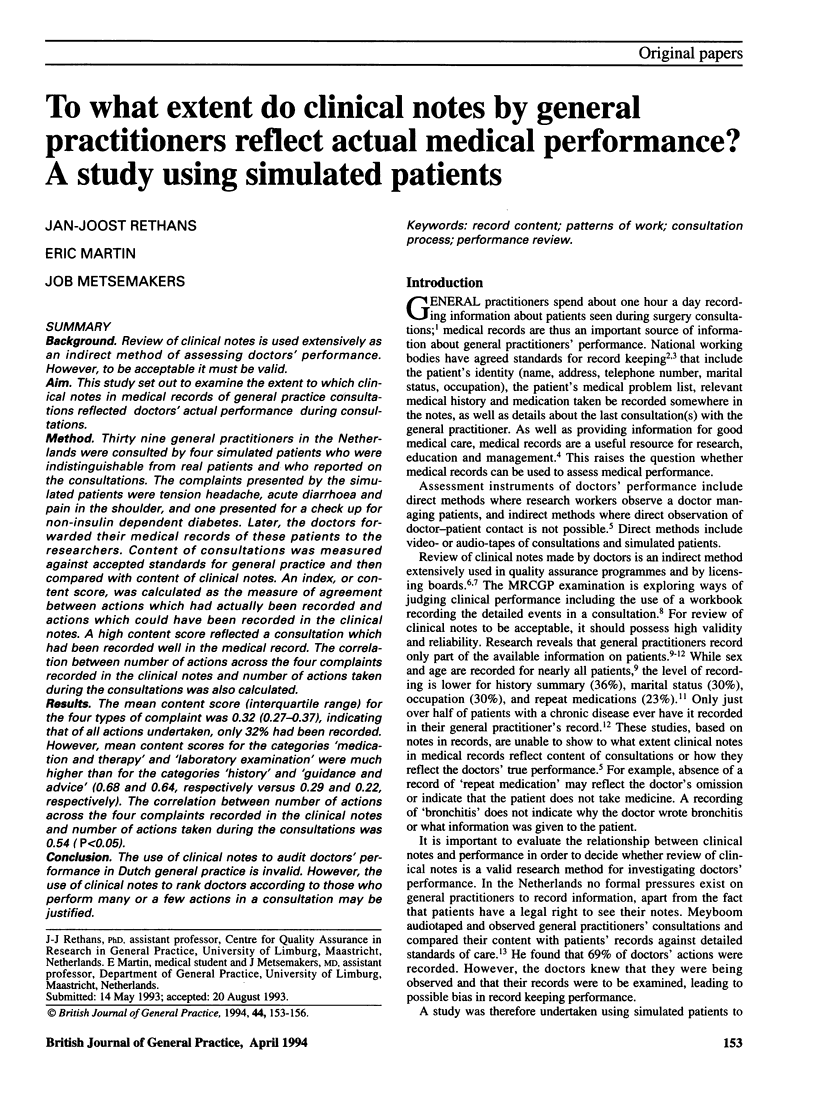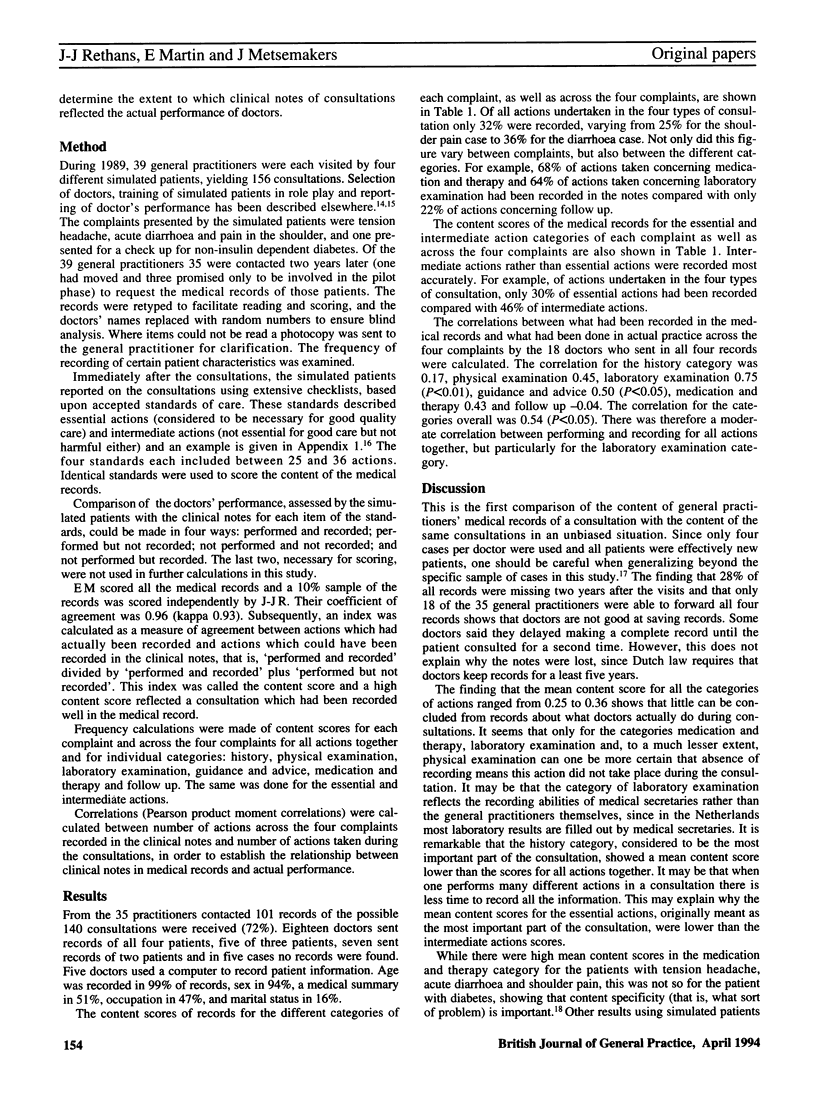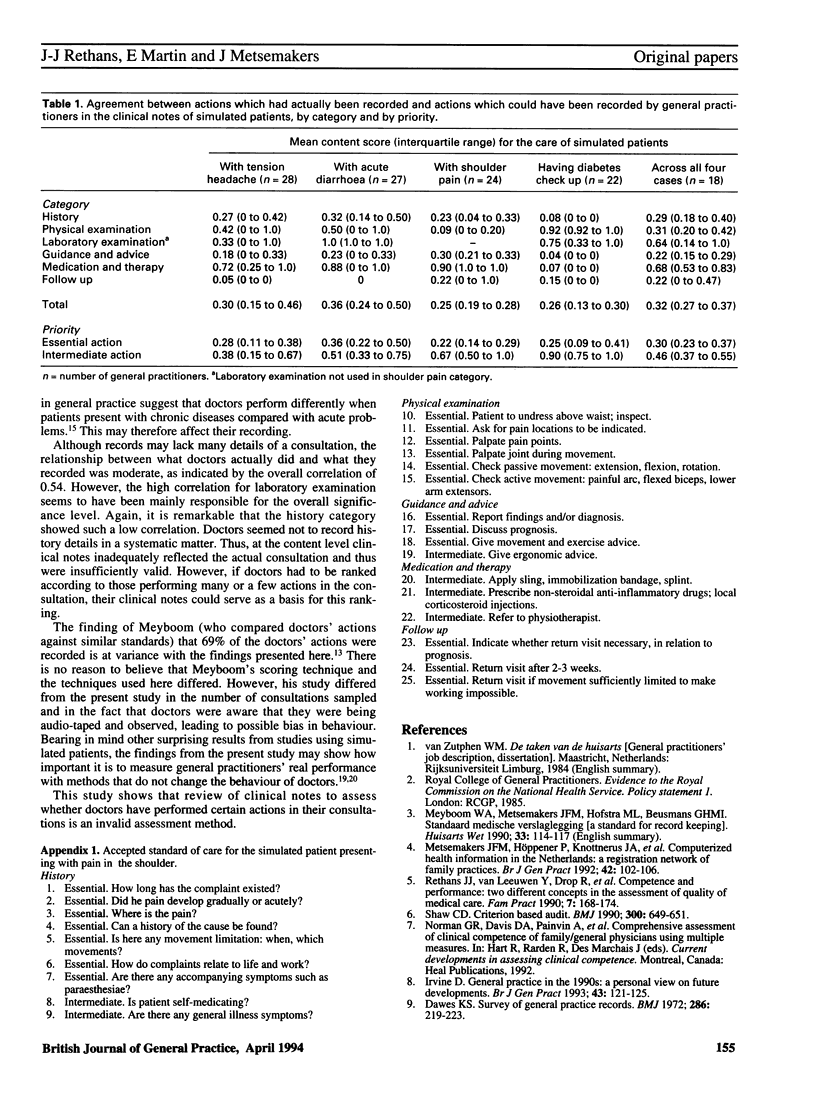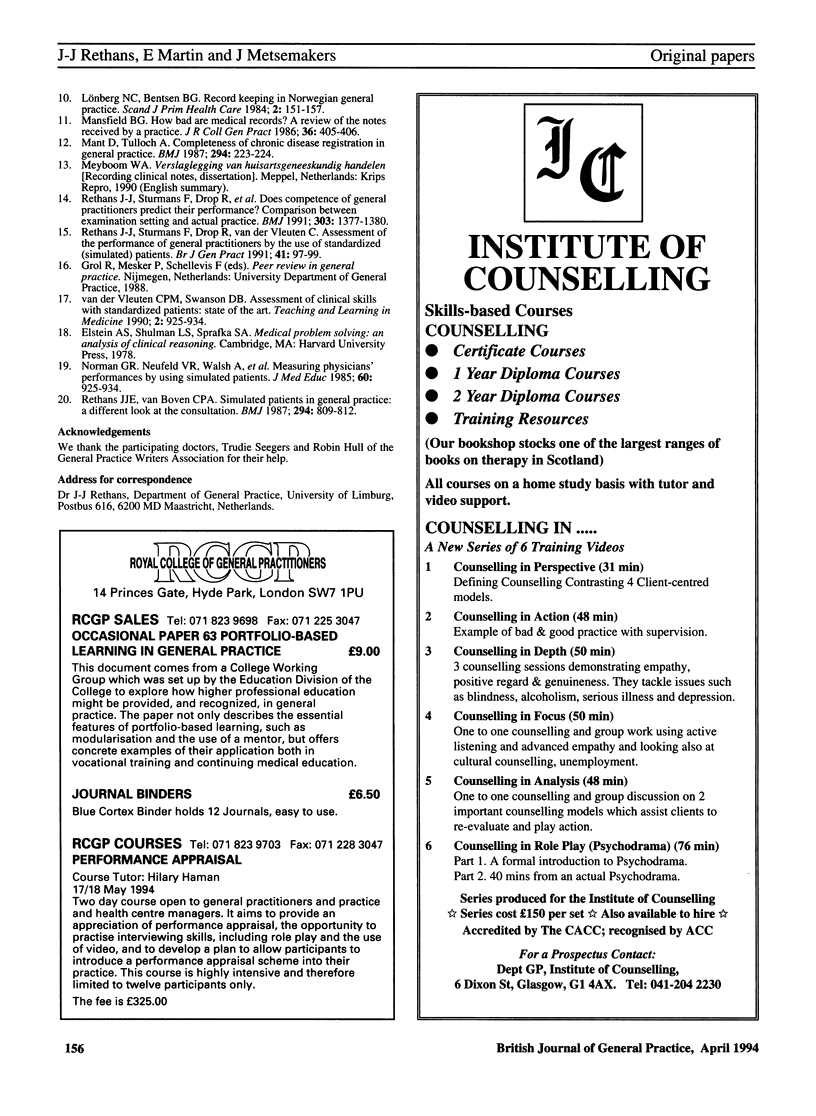Abstract
BACKGROUND. Review of clinical notes is used extensively as an indirect method of assessing doctors' performance. However, to be acceptable it must be valid. AIM. This study set out to examine the extent to which clinical notes in medical records of general practice consultations reflected doctors' actual performance during consultations. METHOD. Thirty nine general practitioners in the Netherlands were consulted by four simulated patients who were indistinguishable from real patients and who reported on the consultations. The complaints presented by the simulated patients were tension headache, acute diarrhoea and pain in the shoulder, and one presented for a check up for non-insulin dependent diabetes. Later, the doctors forwarded their medical records of these patients to the researchers. Content of consultations was measured against accepted standards for general practice and then compared with content of clinical notes. An index, or content score, was calculated as the measure of agreement between actions which had actually been recorded and actions which could have been recorded in the clinical notes. A high content score reflected a consultation which had been recorded well in the medical record. The correlation between number of actions across the four complaints recorded in the clinical notes and number of actions taken during the consultations was also calculated. RESULTS. The mean content score (interquartile range) for the four types of complaint was 0.32 (0.27-0.37), indicating that of all actions undertaken, only 32% had been recorded. However, mean content scores for the categories 'medication and therapy' and 'laboratory examination' were much higher than for the categories 'history' and 'guidance and advice' (0.68 and 0.64, respectively versus 0.29 and 0.22, respectively). The correlation between number of actions across the four complaints recorded in the clinical notes and number of actions taken during the consultations was 0.54 (P < 0.05). CONCLUSION. The use of clinical notes to audit doctors' performance in Dutch general practice is invalid. However, the use of clinical notes to rank doctors according to those who perform many or a few actions in a consultation may be justified.
Full text
PDF



Selected References
These references are in PubMed. This may not be the complete list of references from this article.
- Dawes K. S. Survey of general practice records. Br Med J. 1972 Jul 22;3(5820):219–223. doi: 10.1136/bmj.3.5820.219. [DOI] [PMC free article] [PubMed] [Google Scholar]
- Irvine D. General practice in the 1990s: a personal view on future developments. Br J Gen Pract. 1993 Mar;43(368):121–125. [PMC free article] [PubMed] [Google Scholar]
- Lönberg N. C., Bentsen B. G. Record keeping in Norwegian general practice. Scand J Prim Health Care. 1984 Nov;2(4):151–157. doi: 10.3109/02813438409017713. [DOI] [PubMed] [Google Scholar]
- Mansfield B. G. How bad are medical records? A review of the notes received by a practice. J R Coll Gen Pract. 1986 Sep;36(290):405–406. [PMC free article] [PubMed] [Google Scholar]
- Mant D., Tulloch A. Completeness of chronic disease registration in general practice. Br Med J (Clin Res Ed) 1987 Jan 24;294(6566):223–224. doi: 10.1136/bmj.294.6566.223. [DOI] [PMC free article] [PubMed] [Google Scholar]
- Metsemakers J. F., Höppener P., Knottnerus J. A., Kocken R. J., Limonard C. B. Computerized health information in The Netherlands: a registration network of family practices. Br J Gen Pract. 1992 Mar;42(356):102–106. [PMC free article] [PubMed] [Google Scholar]
- Norman G. R., Neufeld V. R., Walsh A., Woodward C. A., McConvey G. A. Measuring physicians' performances by using simulated patients. J Med Educ. 1985 Dec;60(12):925–934. doi: 10.1097/00001888-198512000-00004. [DOI] [PubMed] [Google Scholar]
- Rethans J. J., Sturmans F., Drop R., van der Vleuten C. Assessment of the performance of general practitioners by the use of standardized (simulated) patients. Br J Gen Pract. 1991 Mar;41(344):97–99. [PMC free article] [PubMed] [Google Scholar]
- Rethans J. J., Sturmans F., Drop R., van der Vleuten C., Hobus P. Does competence of general practitioners predict their performance? Comparison between examination setting and actual practice. BMJ. 1991 Nov 30;303(6814):1377–1380. doi: 10.1136/bmj.303.6814.1377. [DOI] [PMC free article] [PubMed] [Google Scholar]
- Rethans J. J., van Boven C. P. Simulated patients in general practice: a different look at the consultation. Br Med J (Clin Res Ed) 1987 Mar 28;294(6575):809–812. doi: 10.1136/bmj.294.6575.809. [DOI] [PMC free article] [PubMed] [Google Scholar]
- Rethans J. J., van Leeuwen Y., Drop R., van der Vleuten C., Sturmans F. Competence and performance: two different concepts in the assessment of quality of medical care. Fam Pract. 1990 Sep;7(3):168–174. doi: 10.1093/fampra/7.3.168. [DOI] [PubMed] [Google Scholar]
- Shaw C. D. Criterion based audit. BMJ. 1990 Mar 10;300(6725):649–651. doi: 10.1136/bmj.300.6725.649. [DOI] [PMC free article] [PubMed] [Google Scholar]


